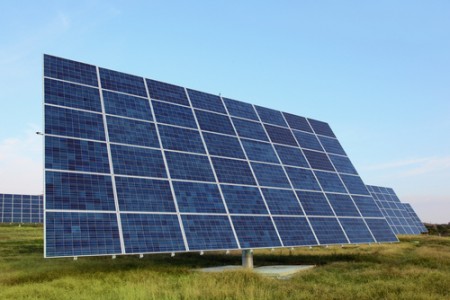By Justin Guay, Sierra Club
If anyone needed proof that clean energy is the future we need, look no further than the recent trade disputes the US has filed against China over wind and now solar power. Nations simply do not fight over unprofitable, unviable sectors. Instead they do exactly what China, India, the EU, and the US are all doing: positioning themselves to capture as large a portion of the booming market as they can.
With the distributed solar segment alone forecast to explode to $150 billion by 2015, it’s clear that now is the time to get the solar boom right. Debilitating trade wars and evisceration of manufacturing in key economies only serves to weaken the industry. This is something the world can ill afford, because at the end of the day, the much bigger game is already underway: dislodging the entrenched fossil fuel industry.

Part of the problem is optics. Just days after the US trade dispute was filed, India was forced to defend the domestic content provisions of its solar mission at the World Trade Organization largely due to concerns of future disputes from the US and the EU. However, despite heavily criticizing India for protecting domestic manufacturers through local content rules, important exceptions (thin film, for instance) have created tremendous opportunities for US companies. Domestic content rules clearly do not necessarily preclude wider benefits to the industry as a whole.
Missing the forest for the trees
As the Chinese trade dispute now spreads to Europe, it is important to remember that this industry will continue to experience tremendous growth. As Forbes suggests, the real race (or game, if you like) is to ensure solar, and all clean energy, is able to dislodge the fossil fuel industry by eliminating dependency on subsidies and becoming as cheap as possible. While subsidies and grid parity are important, the real issue here is political muscle.
The fact is that technological innovations occur in political economies. Important innovations do not automatically translate into changed market places (though price decreases, high rates of innovation and less reliance on subsidies are of course tremendously important). They don’t, because the playing field is incredibly lopsided– a fossil fuel lobby on one side with over a hundred years head start and obscene levels of subsidies (so big we can’t even count them all), and an incredibly young, and immature industry starved for even basic political and financial support (except, it seems, in China).
This game of realpolitik leads to US policy-making dominated by fossil fuel lobbyists attempting to gut the clean energy industry. In India it drives massive investments in new coal-fired infrastructure despite a coal crisis that is getting worse every day and producing expensive power state electricity boards don’t want to buy.
Without a robust clean energy industry, the fossil fuel lobby will continue to extract rather than add value, and politicians will be just fine with that regardless of how irrational this support may seem. So as unappealing as it may seem, the fact that China is playing to win threatens US clean energy manufacturing and, by extension, the much bigger fight.
Clean energy industries in India, the U.S., and throughout the world need serious domestic political muscle that requires this important link in the value chain. In the short term this may mean domestic content provisions are necessary (Not just for the US but for India and other major economies as well). If we want coal fired power plants and internal combustion engines to go the way of the dinosaur, we need a robust locus of political power in these key economies. Without that, we lose the real war.
 Editor’s Note: This column comes to us as a cross post courtesy of Sierra Club. Author credit for this column goes to Jusin Guay.
Editor’s Note: This column comes to us as a cross post courtesy of Sierra Club. Author credit for this column goes to Jusin Guay.